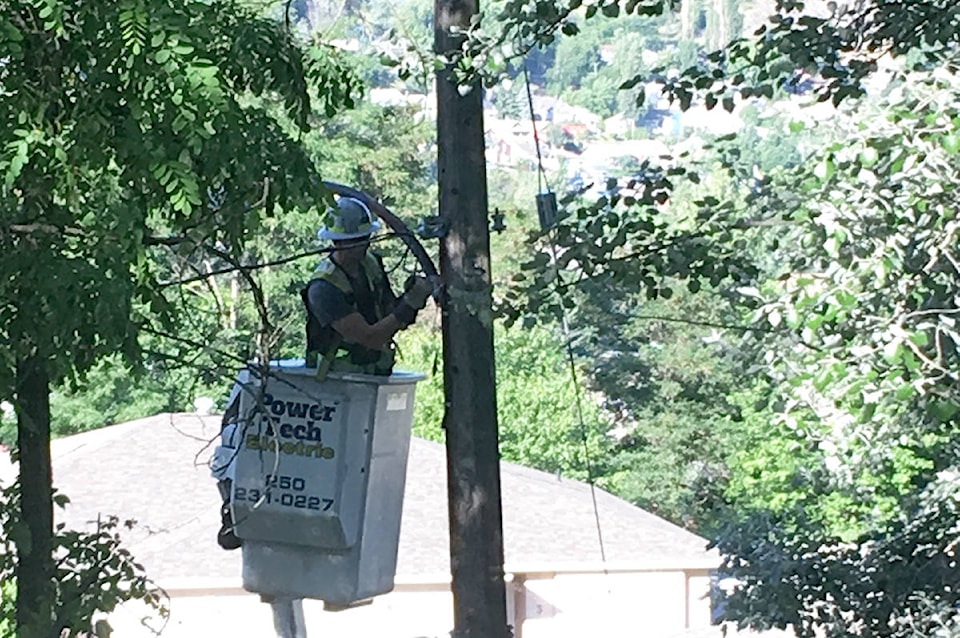The streets of Trail are much brighter at night with the new LEDs - but so are street-facing rooms in homes lining city roadways.
Local conversation about the extreme radiance has circulated on social media, but to date, public works has just a few objections on record, says Utilities Superintendent Patrick Gauvreau.
“I have only received three complaints so far about the brightness,” Gauvreau told the Times. “The city can help reduce the amount of light projecting from these new LED lights by installing house shields, which are installed on the light fixture itself,” he explained.
“But these do not totally reduce or eliminate the light streaming into the homes.”
He suggested residents should also look at replacing existing blinds if they have light streaming into their bedroom windows.
Additionally, the city does have all the LEDs on a dimming schedule.
“The lights are never on at 100 per cent,” Gauvreau explained.
From dusk to midnight, the bulbs are set at 75 per cent power. From midnight to 4 a.m., the lights switch to 50 per cent power, and from 4 a.m. to dawn the power is again upped to 75 per cent.
“When we notice that they are getting dimmer (as the lights age), we may modify the power settings in order to maintain current lighting brightness,” he added.
The city budgeted for the replacement of 1,200 high pressure sodium bulbs with LEDs over a few years.
Work first began in Tadanac, Sunningdale and Glenmerry and downtown because in those neighbourhoods, the lights are on city-owned street poles.
“All other areas have lights on FortisBC poles,” Gauvreau said. “And there were a few hurdles that needed to be crossed before starting on these poles. Now that we have crossed those hurdles, we can start upgrading these lights.”
The last leg of the project was tendered this spring. Power Tech Electric had the lowest bid, and was awarded the job to replace 300 streetlights.
“They’ve replaced a few lights in Glenmerry, since there were a few in that area that hadn’t been upgraded yet, then moved into East Trail,” Gauvreau explained. “Roughly halfway done, they’ve installed approximately 150.”
West Trail residents can expect to see new lights - and much brighter streets - by the fall.
Now issuing rebates at the time of purchase, FortisBC presented the city with a $44,660 cheque in April for this second phase of street light replacements.
As a result of the upgrade, Trail is expected to reduce energy use by about 500,000 kilowatt hours (kWh) annually - or the equivalent of powering 44 average homes for a year.
This is expected to produce annual savings of $93,000.
Each 75W LED cobra head costs $209.
As part of the retrofit, a photocell/node is installed on top of the cobra head to allow for the light to be programmed. That component costs $156, so each LED streetlight with photocell/node is $365.
In recent years, there have been reports on intense LED lights disrupting circadian rhythm.
Circadian rhythm is basically a person’s 24-hour internal clock also known as the sleep/wake cycle.
Health Canada hasn’t issued any formal statement, however last year the Canadian Association of Optometrists released a warning.
“Many streets and roadways in Canada are changing their approach to lighting,” the release read.
While policymakers shouldn’t ignore the LED benefits, the association asked more thought be given to adverse health effects.
“Canadian Association of Optometrists recommend they should also attempt to choose lighting and lighting distribution that reduces light pollution and glare.”
